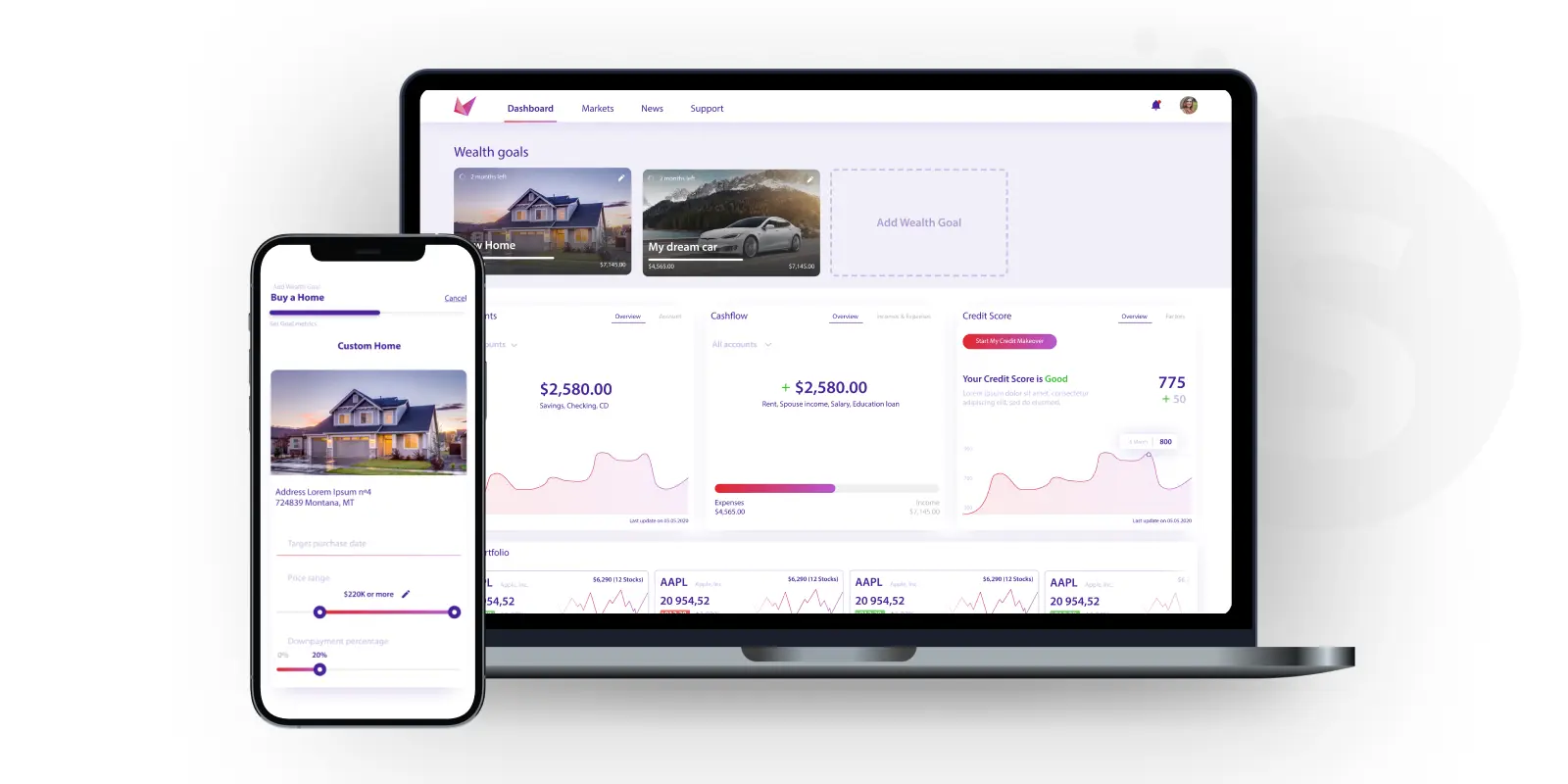Introduction
Welcome to the world of money lending, where the power of capital can open doors to lucrative opportunities. Whether you are an individual looking to supplement your income or a budding entrepreneur seeking a profitable venture, lending money can be a viable option. As the saying goes, “money makes money,” and lending money is no exception.
In this guide, we will explore the ins and outs of money lending and discuss how you can effectively make money by providing loans. From understanding the basic principles to managing risks and scaling up your lending business, we will cover it all. So, let’s dive in and discover the secrets to success in the world of money lending.
Before we delve into the nitty-gritty details, it’s important to note that money lending can yield substantial profits but also comes with its fair share of risks. It requires a careful balance of financial acumen, astute decision-making, and diligent portfolio management. By arming yourself with the right knowledge and following best practices, you can minimize risks and maximize returns.
Whether you are considering lending money as an individual or setting up a formal lending business, this guide will provide you with the essential steps and considerations to get started. So, buckle up and get ready to embark on a journey towards financial growth and prosperity through the world of money lending.
Understanding the Basics of Lending Money
Before diving headfirst into the world of money lending, it is crucial to have a solid understanding of the basic principles and concepts that govern this industry. Lending money involves providing funds to borrowers with the expectation of repayment, usually with interest. Here are some key points to consider:
- Loan Types: There are various types of loans, including personal loans, business loans, mortgages, and more. Each loan has its own unique terms and conditions, repayment schedules, and interest rates.
- Interest Rates: The interest rate is the cost of borrowing money and is typically expressed as an annual percentage. It is influenced by factors such as market conditions, borrower creditworthiness, loan term, and the amount being borrowed.
- Risk Assessment: Evaluating the risk associated with lending is vital. This involves assessing the borrower’s creditworthiness, income stability, and ability to repay the loan. It is essential to have a thorough understanding of the borrower’s financial background and to conduct proper due diligence.
- Repayment Terms: The terms of the loan, including the repayment schedule, the duration of the loan, and any penalties for early repayment, need to be clearly communicated and agreed upon by both parties.
- Secured vs. Unsecured Loans: Loans can be secured or unsecured. Secured loans require collateral, such as property or vehicles, which can be seized if the borrower defaults. Unsecured loans, on the other hand, do not require collateral but may have higher interest rates.
To ensure a successful lending experience, it is essential to adhere to legal requirements, implement effective risk management strategies, and maintain clear communication with borrowers. Additionally, staying informed about the latest lending trends, regulatory changes, and industry best practices can help you adapt and thrive in this dynamic field.
By having a strong grasp of the basics, you can navigate the lending landscape with confidence and make informed decisions that will contribute to your success as a money lender. Now that we have covered the fundamentals, let’s move on to exploring the legal considerations involved in lending money.
Researching the Legal Requirements for Lending Money
When venturing into the business of lending money, it is crucial to understand and comply with the legal requirements of your jurisdiction. Failure to do so can result in severe penalties and legal consequences. Here is a step-by-step guide to help you navigate the legal landscape of money lending:
- Research Local Laws: Start by conducting thorough research to understand the specific legal regulations governing money lending in your area. Laws and regulations can vary from country to country, and even within different states or provinces. Familiarize yourself with the legal framework that applies to lending practices in your jurisdiction.
- Licensing and Registration: Determine whether you need to obtain any licenses or registrations to legally lend money. Some jurisdictions require money lenders to be licensed or registered, while others have specific regulations for lending institutions. Consult with local authorities or seek legal advice to ensure compliance.
- Usury Laws and Interest Rate Caps: Usury laws may impose limits on the maximum interest rates that can be charged on loans. Familiarize yourself with any applicable usury laws or interest rate caps to ensure that your lending practices align with legal requirements.
- Consumer Protection Laws: Understand the consumer protection laws in your jurisdiction that safeguard borrowers’ rights and regulate lending practices. These laws may include provisions regarding disclosure requirements, fair lending practices, and protection against predatory lending.
- Loan Documentation and Disclosures: Ensure that your loan documentation, including loan agreements and disclosure statements, complies with all legal requirements. These documents should clearly outline the terms of the loan, interest rates, fees, repayment schedules, and any other pertinent information that borrowers need to know.
- Data Protection and Privacy: Take steps to protect the personal and financial information of your borrowers. Familiarize yourself with data protection and privacy laws to ensure that you handle and store borrower data appropriately and securely.
It is important to stay updated on any changes or amendments to lending laws and regulations in your jurisdiction. This can be achieved by regularly consulting legal professionals, attending industry conferences and workshops, and staying informed through industry publications and regulatory updates.
By conducting thorough research and ensuring compliance with legal requirements, you can establish a strong foundation for your lending business and build trust with borrowers. In the next section, we will explore the critical process of evaluating borrowers’ creditworthiness to mitigate lending risks.
Evaluating Borrowers’ Creditworthiness
Assessing borrowers’ creditworthiness is a crucial step in the lending process. It helps you determine the risk involved in lending money and enables you to make informed decisions about whether to approve a loan application. Here are some important factors to consider when evaluating borrowers’ creditworthiness:
- Credit History: Review the borrower’s credit history to gain insights into their past borrowing behavior. This includes examining their credit score, payment history, outstanding debts, and any previous defaults or bankruptcies. A strong credit history is indicative of responsible financial management and increases the likelihood of loan repayment.
- Income and Employment Stability: Evaluate the borrower’s income sources, employment status, and stability. A consistent and sufficient income demonstrates the borrower’s ability to meet their financial obligations and repay the loan. Request income verification documents such as pay stubs or tax returns to verify their earnings.
- Debt-to-Income Ratio: Calculate the borrower’s debt-to-income ratio by dividing their total monthly debt payments by their monthly income. This ratio provides insight into their level of existing debt and their ability to manage additional loan payments. A lower debt-to-income ratio indicates a lower financial burden and a higher capacity to repay loans.
- Collateral: If the loan is secured, assess the value and viability of the collateral offered by the borrower. Collateral provides an additional layer of security in case of default. Conduct a thorough assessment of the collateral’s value, marketability, and the legal process needed to seize it in case of default.
- Character and References: Consider the borrower’s character, reputation, and references from previous lenders or business partners. While this factor may not hold as much weight as credit history and financial metrics, it can provide valuable insights into the borrower’s integrity and reliability.
It is important to have a systematic and standardized approach to evaluating creditworthiness. Establish clear criteria for loan approval and maintain consistency in applying them to all potential borrowers. This helps in mitigating bias and ensuring fair and objective decision-making.
While assessing creditworthiness is essential, it is equally important to communicate openly with borrowers regarding the outcome of their loan application. If a loan is declined, provide clear and honest feedback, and offer suggestions on steps they can take to improve their creditworthiness for future applications.
By carefully evaluating borrowers’ creditworthiness, you can minimize the risk of default and make informed decisions that contribute to the success of your lending business. In the next section, we will discuss how to determine the interest rate for your loans.
Determining the Interest Rate
Determining the interest rate for your loans is a critical step in money lending. The interest rate not only affects the profitability of your lending business but also impacts borrowers’ willingness to take on the loan. Here are some factors to consider when determining the interest rate:
- Market Conditions: Stay informed about current market interest rates for similar loans. External factors such as the state of the economy, inflation rates, and the availability of credit can influence the interest rates you offer. Analyze market trends and adjust your rates accordingly to remain competitive.
- Borrower’s Creditworthiness: The creditworthiness of the borrower should significantly influence the interest rate you provide. Borrowers with strong credit histories and stable incomes are less risky, so they may qualify for lower interest rates. Conversely, borrowers with poor credit histories or higher perceived risks may be charged a higher interest rate to compensate for the increased risk.
- Loan Term: Consider the length of the loan when determining the interest rate. Longer-term loans may entail greater risks, as economic conditions and borrower circumstances can change over time. To account for these risks, you may adjust the interest rate based on the loan term.
- Cost of Funds: Assess the cost of acquiring the funds you are lending. If you are obtaining funds from a source that charges interest, such as a bank loan or line of credit, factor in the cost of those funds when determining the interest rate for your borrowers.
- Profit Margin: As a lender, your goal is to generate a profit. While remaining competitive, assess the profit margin you aim to achieve. Consider your operational costs, overhead expenses, and desired return on investment when setting the interest rate.
- Legal and Regulatory Considerations: Ensure compliance with usury laws and interest rate caps in your jurisdiction. Be aware of any limitations or restrictions on the maximum interest rates you can charge and adjust your rates accordingly to stay within legal boundaries.
It’s essential to strike a balance between offering competitive interest rates for borrowers and maximizing profitability for your lending business. Conduct market research to understand the interest rates offered by your competitors and aim to provide rates that are competitive yet sustainable.
Communicate the interest rate clearly to borrowers, and ensure that they understand the total cost of borrowing, including any additional fees or charges. Transparency is key in maintaining trust and credibility with your borrowers.
By considering these factors and striking a balance between risk and profitability, you can determine an appropriate interest rate that attracts borrowers and supports the success of your lending business. In the next section, we will discuss the importance of creating a written loan agreement.
Creating a Written Loan Agreement
When lending money, it is essential to have a written loan agreement that clearly outlines the terms and conditions of the loan. A well-drafted loan agreement provides legal protection for both parties involved and ensures that there is no ambiguity regarding the rights and responsibilities of the borrower and the lender. Here are key aspects to consider when creating a loan agreement:
- Loan Amount and Interest Rate: Clearly specify the principal loan amount and the agreed-upon interest rate. Include details about whether the interest is fixed or variable and any conditions for adjustments to the interest rate.
- Repayment Terms: Outline the repayment schedule, including the frequency of payments, due dates, and the duration of the loan. Make it clear how the borrower should make repayments, whether it’s through a specific payment method or to a designated bank account.
- Fees and Charges: Include any applicable fees and charges, such as origination fees, late payment fees, or prepayment penalties. Clearly state the amount and conditions for each fee to ensure transparency.
- Default and Remedies: Specify the consequences of default, including any penalties or legal actions that may be taken if the borrower fails to repay the loan as per the agreed terms. It’s important to comply with local laws regarding collections and debt recovery.
- Collateral and Security: If the loan is secured, provide details about the collateral being used as security. Clearly state the rights and obligations of both parties regarding the collateral, including procedures for seizing or liquidating the collateral in case of default.
- Representations and Warranties: Include statements by both parties regarding their understanding that all information provided in the loan agreement is true, accurate, and complete. This helps protect against fraudulent or misleading information.
- Dispute Resolution: Specify the mechanism for resolving any disputes that may arise between the borrower and the lender. Check local laws regarding dispute resolution options, such as mediation or arbitration.
- Legal Advice: It is recommended that both parties seek legal advice before signing the loan agreement. This ensures that they fully understand the terms and consequences of the agreement and can make an informed decision.
Once the loan agreement is drafted, carefully review it with the borrower and answer any questions or concerns they may have. Make sure both parties are fully aware of the terms and sign the agreement in the presence of a witness, if required by local laws.
A well-drafted loan agreement can protect your interests as a lender and establish clarity and trust between you and the borrower. It provides a legal reference point in case of disputes and serves as evidence of the agreed-upon terms. In the next section, we will discuss how to implement a lending strategy to maximize your returns.
Implementing a Lending Strategy
Implementing a well-defined lending strategy is key to success in the business of money lending. A systematic approach helps you manage risks, maximize returns, and build a sustainable lending business. Here are some steps to consider when implementing your lending strategy:
- Target Market: Define your target market based on factors such as loan size, loan type, and borrower profile. Understanding your target market helps you tailor your lending products, marketing efforts, and risk assessment processes to cater to their specific needs.
- Marketing and Advertising: Develop a marketing and advertising plan to reach potential borrowers. Utilize various channels, such as online platforms, social media, and partnerships with local businesses, to generate awareness and attract borrowers to your lending business.
- Loan Portfolio Diversification: Diversify your loan portfolio to spread risk across different types of loans and borrowers. This reduces your exposure to potential losses and helps maintain stability in your lending business. Consider offering a range of loan types, including personal loans, business loans, and mortgage loans.
- Automated Loan Processing: Implement efficient loan processing systems to streamline the application, approval, and disbursement processes. Utilize technology, such as online loan applications and automated underwriting, to expedite loan processing while maintaining accuracy and compliance.
- Risk Management: Establish risk management measures to assess and mitigate potential risks. This includes conducting thorough credit assessments, monitoring borrower payment performance, and implementing measures to prevent and manage defaults. Regularly review and update your risk management strategies to adapt to changing market conditions.
- Customer Relationship Management: Build strong relationships with borrowers and prioritize customer service. Provide clear communication, assist borrowers in understanding their loan terms and obligations, and offer flexible options where possible. Positive customer experiences lead to repeat business and referrals.
- Monitoring and Reporting: Implement systems to monitor loan performance, track loan receivables, and generate reports on portfolio performance. This helps you identify trends, assess the effectiveness of your lending strategy, and make informed decisions based on data.
- Compliance and Legal Obligations: Stay updated with legal and regulatory requirements for money lending. Comply with relevant laws, regulations, and consumer protection measures to ensure the legality and sustainability of your lending operations.
By implementing a well-thought-out lending strategy, you can effectively manage risks, attract borrowers, and maximize returns. Regularly review and adjust your strategy based on market dynamics, borrower feedback, and performance evaluation. Continuously seek opportunities to improve and refine your lending processes to maintain a competitive edge in the industry.
In the next section, we will discuss the importance of keeping track of loan repayments and maintaining proper records of borrower transactions.
Keeping Track of Loan Repayments
Properly tracking loan repayments is crucial in maintaining the financial health of your lending business. It ensures that you receive timely payments, allows you to monitor borrower behavior, and helps in managing cash flow effectively. Here are some key steps to consider when keeping track of loan repayments:
- Establish a Repayment Schedule: Set up a clear repayment schedule with due dates for each installment. Communicate the details to the borrower and ensure they are aware of their payment obligations. This helps in avoiding confusion and missed payments.
- Send Regular Payment Reminders: Send timely reminders to borrowers, whether it’s via email, SMS, or a dedicated payment portal. Inform them about upcoming due dates and provide convenient payment options to encourage on-time repayments.
- Automate Payment Processing: Implement automated payment processing systems to streamline the collection process and reduce the risk of manual errors. Consider offering automatic payment options for borrowers to ensure regular and timely repayments.
- Maintain Accurate Records: Keep detailed records of all loan transactions, including payment dates, amounts, and any additional fees or charges. Accurate record-keeping helps in tracking payment history, identifying discrepancies, and resolving any disputes that may arise.
- Monitor Payment Performance: Regularly monitor borrower payment performance and identify any patterns of late or missed payments. This allows you to address potential issues promptly and take appropriate actions, such as reminders or collections efforts, to ensure compliance with the loan agreement.
- Provide Payment Receipts: Issue receipts or confirmation notices to borrowers for each payment received. This provides transparency and serves as proof of payment, giving confidence to borrowers while maintaining accurate financial records.
- Manage Delinquent Accounts: Develop a strategy for managing delinquent accounts and late payments. Set clear policies for how to handle overdue payments, whether it’s through offering repayment plans, imposing late fees, or initiating collections procedures as a last resort.
- Utilize Technology and Software: Leverage specialized software and tools to automate loan tracking and payment management tasks. There are numerous loan servicing platforms available that can streamline your processes, improve efficiency, and provide robust reporting capabilities.
By keeping track of loan repayments diligently, you can maintain financial stability in your lending business, prevent cash flow disruptions, and build trust with borrowers. Regularly review your repayment processes and make necessary adjustments based on feedback and performance evaluation. Effective payment tracking helps ensure the overall success of your lending operations.
Next, we will discuss how to handle late or defaulted loan payments and manage the associated risks.
Dealing with Late or Defaulted Payments
Despite your best efforts, there may be instances where borrowers miss payments or default on their loans. Dealing with late or defaulted payments is a crucial aspect of managing a lending business. Here are some important steps to take when faced with late or defaulted loan payments:
- Communication: Open and clear communication with borrowers is essential when payments are overdue. Reach out to the borrower promptly to understand the reason for the late payment and discuss potential solutions. Listen to their concerns and work together to find a mutually beneficial solution.
- Grace Periods and Late Fees: Establish a specific grace period, typically a few days beyond the due date, during which borrowers can make payments without incurring any penalties. If payments are still not received after the grace period, impose reasonable late fees as outlined in the loan agreement.
- Offer Payment Plans: If borrowers are facing temporary financial difficulties, consider offering them a repayment plan. This allows them to catch up on missed payments over an extended period, easing the burden while ensuring eventual repayment of the loan.
- Escalate Collections: If efforts to resolve the delinquency are unsuccessful, consider escalating collections efforts. This may involve engaging a collections agency or pursuing legal action, depending on the laws and regulations in your jurisdiction. Consulting with legal professionals is advised to navigate the proper legal procedures.
- Collateral Liquidation: In the case of secured loans, if the borrower defaults on payment, follow the legal procedures outlined in the loan agreement to seize and liquidate the collateral. Ensure compliance with local laws and regulations regarding repossession and sale of collateral.
- Preserve Credit and Reputation: Preserve your reputation as a responsible lender by handling late or defaulted payments professionally and ethically. Avoid harassing or threatening tactics. Treat borrowers with respect and fairness to uphold your credibility and maintain positive relationships.
- Lessons Learned: Evaluate the circumstances surrounding late or defaulted payments to identify potential gaps or weaknesses in your lending processes. Implement improvements to prevent similar situations in the future, such as enhancements in credit assessment techniques, risk management strategies, or borrower education programs.
Keep detailed records of all interactions and actions taken in relation to late or defaulted payments. These records will serve as evidence if legal action becomes necessary and help you assess the effectiveness of your collections efforts.
Remember, dealing with late or defaulted payments is an inevitable part of the lending business. By maintaining proactive communication, offering flexible solutions, and following legal procedures, you can minimize the impact on your lending operations and work towards a resolution that benefits both parties.
Next, we will discuss the importance of managing risks and building a diversified loan portfolio.
Managing Risks and Building a Diversified Portfolio
Managing risks is a critical aspect of running a successful lending business. By implementing effective risk management strategies and building a diversified loan portfolio, you can mitigate potential losses and ensure the long-term stability and profitability of your business. Here are important steps to consider:
- Assess Borrower Creditworthiness: Conduct thorough credit assessments before approving loans. Evaluate borrowers’ credit histories, income stability, and debt-to-income ratios to assess their ability to repay the loan. Implement strict eligibility criteria to minimize the risk of defaults.
- Implement Loan-to-Value Ratio Limits: Determine the maximum loan-to-value ratio you are comfortable with for different loan types. This ratio compares the loan amount to the value of the collateral offered. Setting appropriate limits helps protect against potential losses in case of defaults or collateral depreciation.
- Manage Interest Rate Risk: Consider the potential impact of changes in interest rates on your lending business. Monitor market trends and evaluate the interest rate sensitivity of your loan portfolio. Implement strategies such as fixed-rate loans, interest rate hedging, or adjustable rate mechanisms to mitigate interest rate risks.
- Build a Diversified Loan Portfolio: Avoid overexposure to specific industries or borrower profiles by diversifying your loan portfolio. Offer loans to a mix of individuals, businesses, and sectors to spread the risk. A diversified portfolio can help offset potential losses from defaulted loans with income from performing loans.
- Monitor and Manage Loan Concentration: Regularly monitor your loan portfolio for any concentration risks. Limit the exposure to a single borrower, industry, or geographic region to prevent excessive risk concentration. Consider setting thresholds and enforcing risk limits to maintain a well-diversified portfolio.
- Regularly Review and Update Credit Policies: Periodically review and update your credit policies to adapt to changing market conditions and regulations. Stay informed about industry best practices and adjust your risk management strategies accordingly. This ongoing evaluation and improvement help in identifying and addressing potential risks proactively.
- Establish Risk Management Protocols: Develop standardized procedures for risk assessment, underwriting, monitoring, and collections. These protocols ensure consistency and help in effectively managing risks across your lending operations. Train your staff on these protocols to uphold best practices throughout the organization.
- Stay Informed About Regulatory Changes: Keep abreast of regulatory changes pertaining to money lending and consumer protection. This includes usury laws, interest rate caps, collections practices, and data privacy regulations. Compliance with these regulations minimizes legal and reputational risks.
Regularly monitor and evaluate the performance of your loan portfolio. Identify any red flags, such as a significant increase in defaults or changes in market conditions, and take appropriate actions to mitigate risks. Consider diversifying your funding sources as well to reduce reliance on a single funding channel.
Through effective risk management and a diversified loan portfolio, you can build a resilient lending business that withstands market fluctuations and potential borrower defaults. Strive for continuous improvement and adaptation to ensure the long-term success and profitability of your lending operations.
Next, we will explore ways to scale up your lending business and expand your reach.
Scaling Up Your Lending Business
As your lending business grows and gains traction, you may seek to scale up your operations and expand your reach. Scaling up involves increasing loan volume, expanding into new markets, and improving operational efficiency. Here are key steps to consider when scaling up your lending business:
- Capital Considerations: Assess your capital requirements to support increased loan volume. Determine whether you have sufficient funds or if you need to seek additional capital through sources such as investors, loans, or partnerships.
- Enhance Technology Infrastructure: Invest in robust loan management systems and technology infrastructure that can handle higher loan volumes efficiently. Automated loan origination, underwriting, and servicing processes enable smoother operations and faster turnaround times.
- Expand Marketing and Outreach: Increase your marketing efforts to reach a broader audience of potential borrowers. Utilize targeted online and offline marketing strategies, partnerships with affiliates or agents, and referral programs to generate leads and expand your customer base.
- Hire and Train Qualified Staff: As your lending business grows, recruit and train more staff members to handle increased workload and customer service needs. Ensure that your team is well-equipped with the necessary skills and knowledge to meet the demands of scaling operations.
- Explore New Loan Products: Consider expanding your range of loan products to cater to a wider range of borrowing needs. Research market demands and develop innovative loan offerings that align with your target market’s requirements and preferences.
- Form Strategic Partnerships: Consider partnering with other financial institutions or fintech companies to leverage their expertise, distribution networks, or technological capabilities. Strategic partnerships can help you access new markets, share resources, and accelerate growth.
- Compliance and Risk Management: Ensure that your expansion plans align with regulatory requirements and best practices. Strengthen your risk management systems and protocols to handle increased loan volumes and maintain sound lending practices.
- Monitor Key Performance Indicators (KPIs): Define and track key performance metrics such as loan volume, default rates, customer acquisition costs, and portfolio profitability. Regularly analyze and assess these KPIs to identify areas for improvement and make informed strategic decisions.
- Adapt to Market Trends: Keep an eye on market trends and evolving customer needs. Continuously innovate and adapt your lending products and services to stay competitive and meet the changing demands of borrowers.
Scaling up your lending business requires careful planning, adequate resources, and a focus on operational efficiency. It is essential to maintain the quality of your lending practices and not compromise on risk management. Regularly review and adjust your strategies as you scale to ensure sustainable growth and profitability.
Lastly, we will conclude the guide to money lending and recap the key points discussed throughout the article.
Conclusion
Congratulations! You have now reached the end of our comprehensive guide to money lending. We have covered the essential aspects of starting and operating a successful lending business, from understanding the basics of lending money to scaling up your operations. Let’s recap the key points we explored:
We began by emphasizing the importance of understanding the basics of lending money, including loan types, interest rates, risk assessment, and collateral. This foundation provides a solid understanding of the lending landscape.
Next, we delved into the crucial step of researching the legal requirements for lending money. Complying with local laws, licensing, and consumer protection regulations is paramount to ensure a smooth and legal operation.
We then explored the critical process of evaluating borrowers’ creditworthiness. Assessing credit history, income stability, and collateral value helps in making informed decisions and managing lending risks effectively.
Determining the interest rate is crucial for profitability and borrower satisfaction. Considering market conditions, borrower creditworthiness, and costs of funds helps strike a balance and remain competitive.
Creating a written loan agreement provides legal protection and clarifies the terms and conditions for both parties. Proper documentation ensures transparency and reduces the risk of misunderstandings or disputes.
Implementing a well-defined lending strategy helps manage risks, attract borrowers, and maximize returns. The strategy includes defining the target market, marketing efforts, loan portfolio diversification, and efficient loan processing.
Managing loan repayments diligently ensures timely payments and maintains healthy cash flow. Regular communication, automated processing, and accurate record-keeping are essential for effective payment tracking.
Handling late or defaulted loan payments requires open communication, grace periods, and consideration of repayment plans. Escalating collections efforts and preserving your reputation are important in managing delinquent accounts.
Managing risks and building a diversified loan portfolio are essential for the long-term stability of your lending business. Assessing creditworthiness, monitoring loan concentration, and staying informed about market conditions help mitigate risks.
Finally, we discussed the process of scaling up your lending business. Increasing loan volume, expanding marketing efforts, and enhancing operational efficiency are key steps in achieving sustainable growth.
By following these guidelines and implementing best practices, you can embark on a successful journey in the world of money lending. Remember to adapt to changing market conditions, stay informed about legal requirements, and prioritize the needs of your borrowers.
We hope that this guide has provided valuable insights and tools to help you navigate the complexities of money lending. Best of luck as you embark on your lending journey!

























